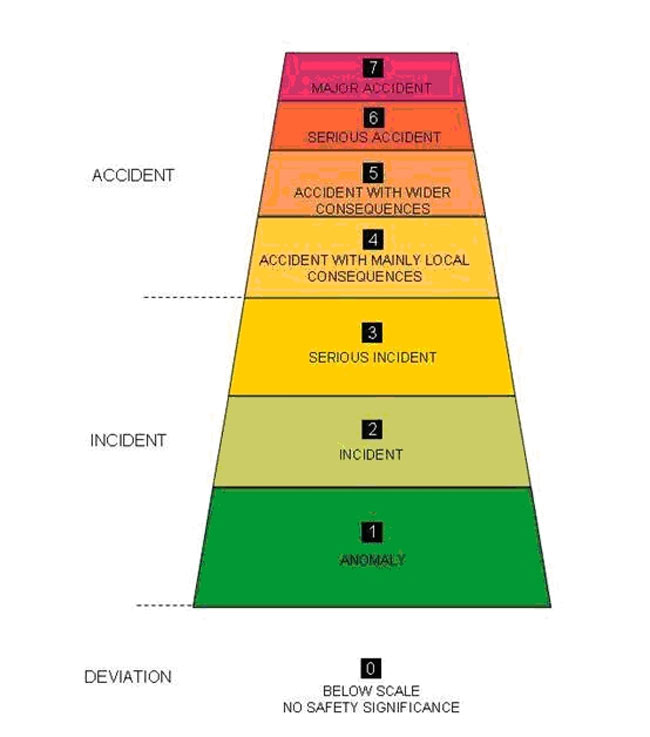Nuclear Event Rating Scale Revamped

A scale used to classify the severity of a nuclear accident is being expanded to include incidents related to the transport of radioactive materials.
The International Nuclear Event Scale (INES) works like the Richter scale for earthquakes. Government officials use a numeric scale to classify and report the severity of nuclear events to the world at large. The nuclear ratings are communicated to officials and others by the International Atomic Energy Agency.
More than 60 countries have agreed to report nuclear events and their ratings to the Atomic Energy Agency, most within 48 hours.
The INES is not yet well-known to experts, let alone the public. Cynthia Jones, a U.S. representative to the INES Advisory Committee and a senior technical advisor at the Nuclear Regulatory Commission, will illustrate how the scale is used and recent additions to it this week at an annual meeting of the Health Physics Society in Oregon.
The scale ranges from 1 to 7, as follows:
Rating 1—an anomaly Rating 2—an incident, such as when the regulatory limit for a radiation worker has been exceeded Rating 3—a serious incident Rating 4—an accident with mostly local consequences Rating 5—an accident with wider consequences Rating 6—a serious accident Rating 7—a major accident
The accident at Three Mile Island nuclear power plant in Pennsylvania in 1979 would be classified as a 6 on this scale, while the Chernobyl disaster of 1986 would rank as a 7, the highest rating.
Get the world’s most fascinating discoveries delivered straight to your inbox.
The additions will cover any radiation sources and transport incidents, including those in which radioactive packages are lost or stolen.
- Doomsday Clock Ticks Forward
- Small Nuclear War Would Cause Global Environmental Catastrophe
- Top 10 Ways to Destroy Earth
Jeanna Bryner is managing editor of Scientific American. Previously she was editor in chief of Live Science and, prior to that, an editor at Scholastic's Science World magazine. Bryner has an English degree from Salisbury University, a master's degree in biogeochemistry and environmental sciences from the University of Maryland and a graduate science journalism degree from New York University. She has worked as a biologist in Florida, where she monitored wetlands and did field surveys for endangered species, including the gorgeous Florida Scrub Jay. She also received an ocean sciences journalism fellowship from the Woods Hole Oceanographic Institution. She is a firm believer that science is for everyone and that just about everything can be viewed through the lens of science.


